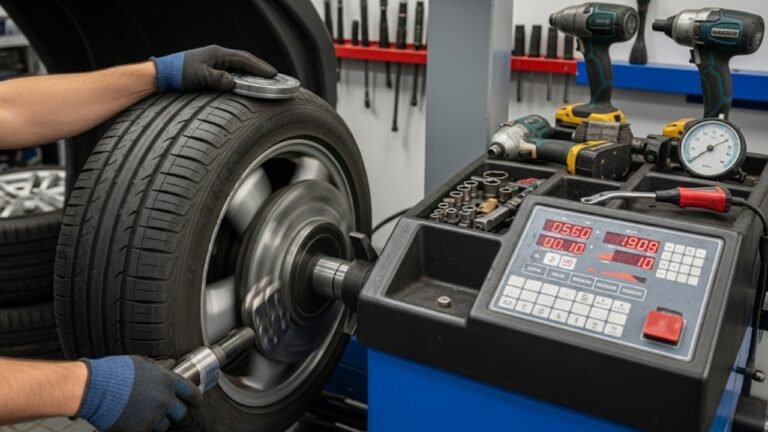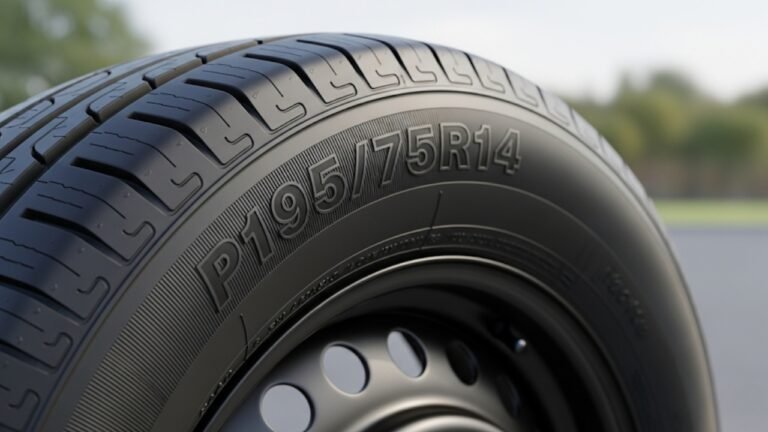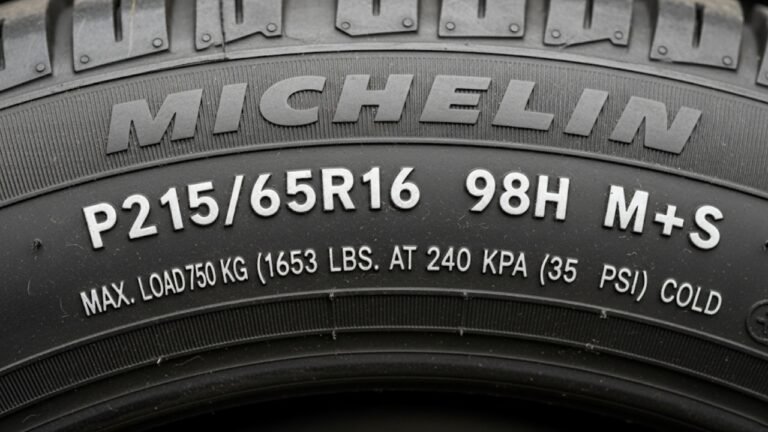How Much Does a Car Tyre Puncture Repair Cost?
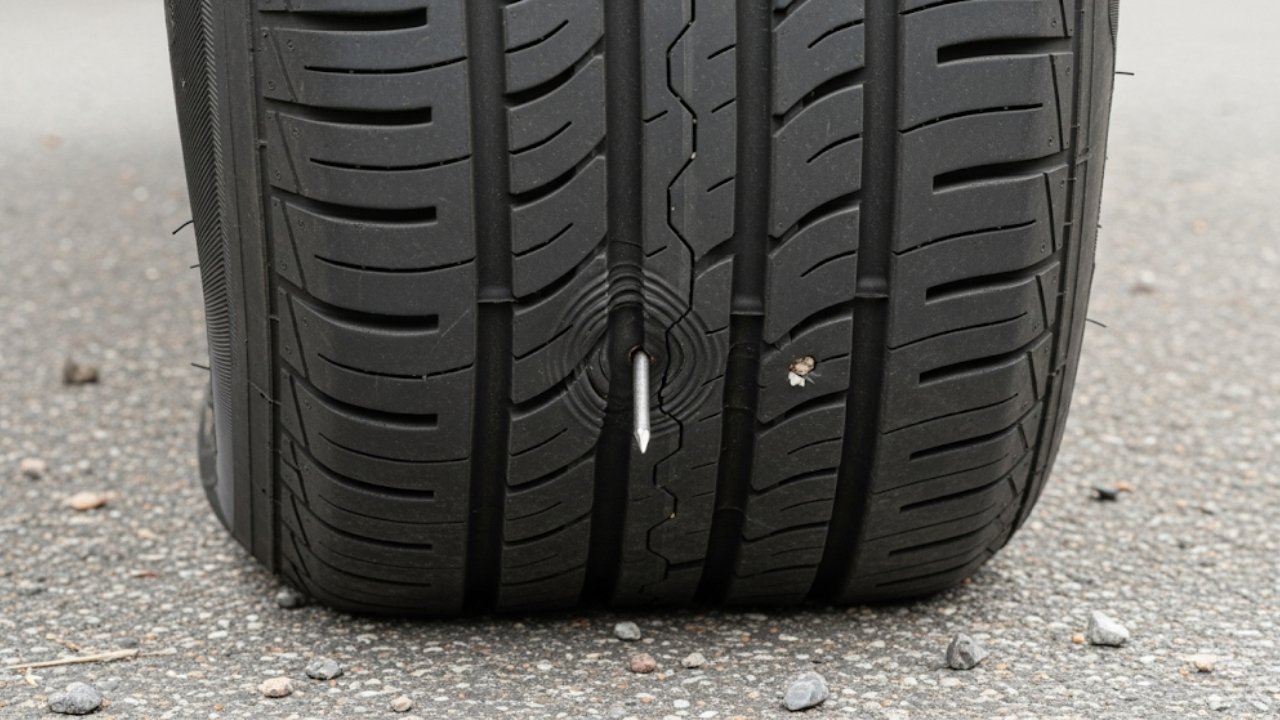
There’s something humbling about hearing that subtle “flop-flop-flop” sound as your car starts dragging — a clear sign your tyre’s in trouble. Whether it’s a rusty nail, a hidden pothole, or the dreaded slow leak that finally gave out, getting a tyre puncture feels like an unavoidable rite of passage for every driver.
But here’s the good news — not all tyre punctures are a wallet-draining disaster.
Many of us ask the same question right away:
“How much does a car tyre puncture repair cost?”
The answer depends on a few key things — where you are, what kind of car you drive, how bad the puncture is, and whether you go DIY or professional. This guide will walk you through every bit of it, honestly and simply, like a friend chatting over tea — because most of us don’t speak “mechanic,” and we shouldn’t need to.
Understanding the Real Cost of Tyre Puncture Repairs
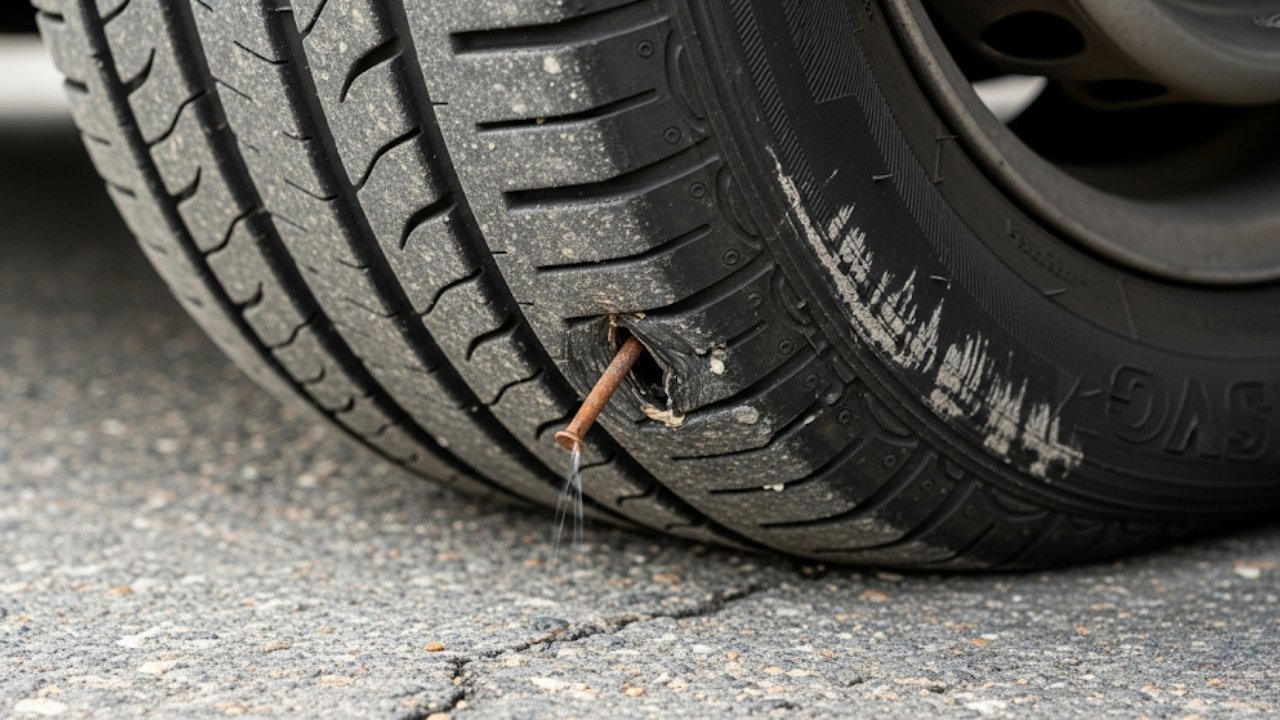
On average, a car tyre puncture repair cost ranges from $10 to $50. But that number can shift depending on:
-
Location: City vs. countryside or country to country
-
Type of tyre: Run-flat tyres, performance tyres, or standard
-
Severity of damage: A tiny nail? Or a blowout?
-
Repair method: Plug, patch, seal, or replacement
Here’s a quick look at the typical price range:
| Repair Method | Average Cost (USD) | Details |
|---|---|---|
| Plug repair | $10 – $25 | Fast, temporary, suitable for small holes |
| Patch repair | $15 – $30 | More secure, lasts longer |
| Plug + Patch combo | $25 – $40 | Strongest fix, often used professionally |
| Run-flat tyre repair | $30 – $50 | Special handling needed |
| Full tyre replacement | $70 – $250+ | Only if repair isn’t safe or legal |
Pro tip: If you’re offered a fix over $50 for a standard puncture, get a second opinion unless you’re driving a performance or luxury car.
Why Prices Vary: It’s Not Just About the Hole
So, why can the car tyre puncture repair cost vary so much? Well, it’s like asking how much a haircut costs. It depends on where you go and what you need done.
Let’s break down the factors simply:
1. Type of Tyre
Some tyres are straightforward — basic rubber, easy fix. Others? Not so much.
-
Run-flat tyres: Built to keep going even after a puncture. Sounds cool, right? But repairing them is tricky and often costs more, sometimes $30–$50 or higher.
-
High-performance tyres: Think BMW, Audi, or sport cars — repairs might cost more due to the tools or care needed.
-
Tube vs. tubeless: Tubeless tyres are easier and cheaper to fix nowadays.
Imagine fixing a leather boot vs. a rubber sandal. More layers, more cost.
2. Location, Location, Location
Repairing a puncture in Los Angeles isn’t going to cost the same as it would in rural Kansas. Similarly, in the UK or Australia, pricing shifts based on local wage, business cost, and even demand.
In cities, you might pay 20–30% more, especially at premium service centers or brand-authorized garages.
Quick examples:
-
USA (city): $25–$45
-
USA (rural): $10–$25
-
UK average: £15–£35
-
Australia average: AUD 25–50
3. Where You Get It Fixed
There’s a big difference between:
-
Quick lube centers
-
Dealership garages
-
Independent tyre shops
-
Mobile tyre repair services
Dealerships often charge more (because they can). Independents may offer the same service for half the cost. Mobile repair vans might charge a call-out fee (extra $20–$40), but they come to you — a lifesaver if you’re stranded.
Types of Tyre Puncture Repairs Explained
Not all repairs are equal — and not all should be trusted. Let’s demystify the types.
Plug Repair
-
Cheapest, quickest
-
Inserted from outside
-
Best for holes in tread, not sidewalls
-
Takes 10–15 minutes
-
Cost: $10–$25
️ Patch Repair
-
Applied from inside the tyre
-
Safer and more durable
-
Takes 30–40 minutes
-
Cost: $15–$30
Plug + Patch Combo
-
The gold standard
-
Combines internal patch with external plug
-
Often recommended by professionals
-
Cost: $25–$40
Tyre Sealant
-
Emergency fix (e.g., Slime or Fix-a-Flat)
-
Handy but not long-lasting
-
Not recommended for long-term use
-
Cost: $5–$15 (DIY)
When Not to Repair: Know the Limits
Here’s a golden rule: not all tyres should be repaired.
If you try to fix a damaged tyre that’s beyond saving, you’re putting your life at risk. No pressure, but really — pressure matters.
Don’t repair if:
-
The sidewall is punctured
-
The hole is bigger than 1/4 inch
-
There’s internal damage you can’t see
-
You’ve already repaired the tyre more than once in the same spot
-
It’s worn down (less than 2/32” tread left)
Think of it like patching a parachute — some things you just don’t gamble with.
DIY vs. Professional Repair: Which One Should You Choose?
DIY repairs can save you money, but not always stress.
DIY kits are cheap and available almost anywhere. You can grab a plug kit from Walmart or Amazon for around $10–$20. But they come with a learning curve.
Pros of DIY:
-
Cheap
-
Immediate fix if you’re stranded
-
Good for small tread punctures
Cons of DIY:
-
Might miss hidden internal damage
-
Not approved by tyre manufacturers
-
Could void tyre warranty
-
Shorter lifespan than professional patch
Best for: emergency fixes until you get to a shop.
Real-Life Experience: My Tyre, My Mistake
Let me tell you a quick story.
A few months ago, I drove over a nail after picking my niece up from school. I felt the tyre getting soft but thought, “Eh, it’ll last.” Bad idea.
I drove for 10 more minutes, and boom — full flat. I tried to pump it, then used a sealant spray. It worked for two hours. Then it gave out on the highway. Total panic.
A mobile repair van came, fixed it with a plug-patch combo, and charged $35. Honestly? Could’ve avoided the whole drama with a $20 fix earlier.
Moral? Don’t ignore a puncture — small costs now save bigger ones later.
What About Warranties? Can You Claim a Free Repair?
Here’s something most car owners forget — tyres often come with a warranty. And in many cases, it includes free or discounted puncture repair.
Let’s break it down:
Manufacturer Warranty
Most top tyre brands (Michelin, Goodyear, Bridgestone) offer limited warranties that cover defects. However, accidental damage like a puncture from a nail isn’t always included — unless you bought extra protection.
Retailer Road Hazard Coverage
Retailers like Discount Tire or Costco often offer road hazard protection. This may include:
-
Free flat repair
-
Pro-rated replacement if tyre is beyond repair
-
Free lifetime rotation or balancing
Costco, for instance, provides free lifetime flat repair if you bought the tyre there. So before paying out of pocket, check your paperwork. You might already be covered.
Think of it like health insurance for your wheels. Better to check before you swipe your card.
Hidden Charges You Might Not Expect
Sometimes, you go in expecting a $20 fix and walk out with a $50 bill. Why? Let’s uncover the sneaky extras:
Common Add-ons:
| Item | Possible Extra Cost | Details |
|---|---|---|
| Tyre valve replacement | $5 – $10 | Sometimes replaced during repair |
| Tyre balancing | $10 – $25 | Ensures smooth ride after repair |
| TPMS reset | $10 – $20 | Required if sensor was affected |
| Environmental/disposal fee | $2 – $5 | Waste handling charges |
So while your actual car tyre puncture repair cost might start low, it can rise if additional services are added. Always ask for a quote upfront to avoid surprise charges.
How to Avoid Tyre Punctures in the First Place
We all know the old saying: prevention is better than cure. The same goes for tyres.
Here are some practical, real-world tips to avoid another puncture:
✅ Simple Preventative Habits:
-
Check your tyre pressure weekly
-
Avoid driving too close to curb edges or debris
-
Don’t overload your car (excess weight weakens tyres)
-
Rotate your tyres every 5,000–8,000 miles
-
Buy tyres with built-in puncture protection (some Pirelli or Continental models)
You wouldn’t walk barefoot on broken glass. Don’t let your tyres do it either.
When to Replace Instead of Repair
Even if a shop can repair your tyre, it doesn’t mean they should. Safety is king here.
Here’s a quick “Replace vs. Repair” checklist:
Repair it if:
-
The puncture is on the tread
-
The hole is less than 6mm (1/4 inch)
-
You haven’t repaired the same spot before
Replace it if:
-
The sidewall is damaged
-
The tyre is worn below legal tread depth
-
You see bulges, cracks, or cords
-
The puncture is near the shoulder (edge between tread and sidewall)
Your tyre may look okay on the outside — but like a bruised apple, the damage inside can be deadly. Don’t risk it for a few bucks.
FAQs: All Your Tyre Repair Questions Answered
Let’s answer the most common questions people Google about tyre repair:
❓ How much does a car tyre puncture repair cost at Walmart?
Walmart typically charges $10 to $15 for a basic plug repair, and $25–$35 for a patch or combo. Prices may vary by location.
❓ Can I drive with a punctured tyre?
Only short distances — and only if the tyre isn’t flat. If it’s visibly deflated, stop driving immediately. Driving on a flat can destroy your rim or cause a blowout.
❓ Is it cheaper to plug or patch a tyre?
Plugging is usually cheaper ($10–$20), but patching is more reliable. Many pros recommend the plug-patch combo as the safest option.
❓ Does tyre sealant ruin tyres?
Sealants like Fix-a-Flat can help in emergencies, but frequent use can damage TPMS sensors and leave residue inside. Best to use only when needed — and clean out ASAP.
❓ Is puncture repair permanent?
Yes — if done properly using a patch or plug-patch from inside the tyre. Simple plugs or sealants are temporary and should be followed up with professional inspection.
❓ How long does it take to repair a tyre puncture?
Most repairs take 20–40 minutes depending on the method and wait time. Mobile repairs may take longer to arrive but fix it fast once on site.
❓ Can run-flat tyres be repaired?
Sometimes — but many tyre shops refuse to repair run-flats because it’s hard to assess internal damage. Check your tyre brand’s official stance.
❓ Will insurance cover a puncture repair?
Usually not. Most basic auto insurance plans don’t cover tyre punctures unless you have roadside assistance or purchased tyre protection separately.
Final Thoughts: Spend Smart, Drive Safe
Let’s bring it all home.
A puncture repair might feel like a small issue — but it touches on big themes: safety, money, and peace of mind. Knowing how much does a car tyre puncture repair cost is more than just numbers. It’s about being prepared.
Sometimes it’s a $10 quick fix. Sometimes, a hidden problem means a new tyre. Either way, you deserve transparency, quality, and options.
So next time you hear that dreaded “flop-flop,” don’t panic. Just remember:
-
Breathe.
-
Check your pressure.
-
Know your repair options.
-
Ask about hidden costs.
-
Drive smarter from there on.
Your tyres carry you through life’s journeys — whether it’s to a job interview, a first date, or a school pickup. Treat them right, and they’ll do the same for you.


